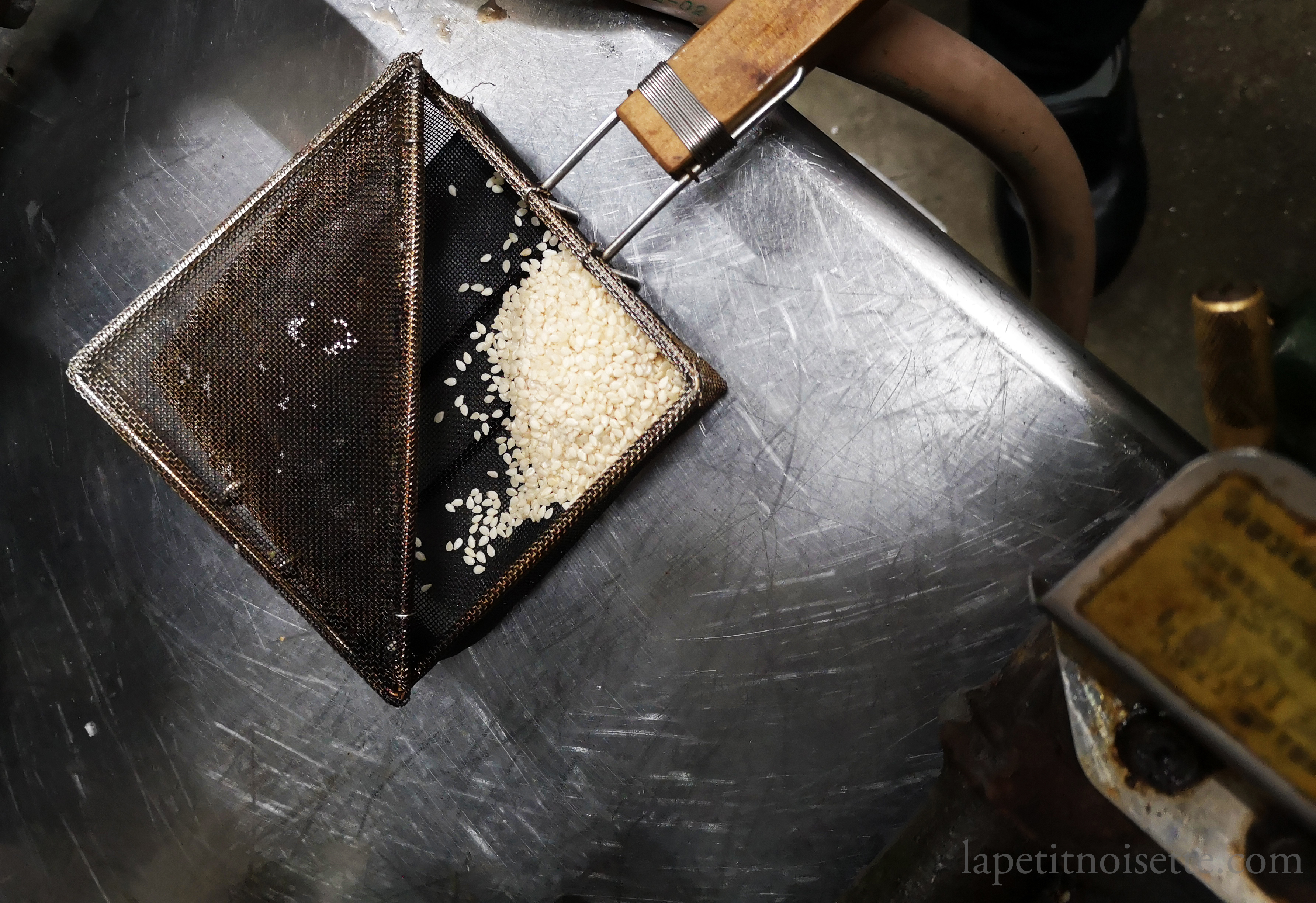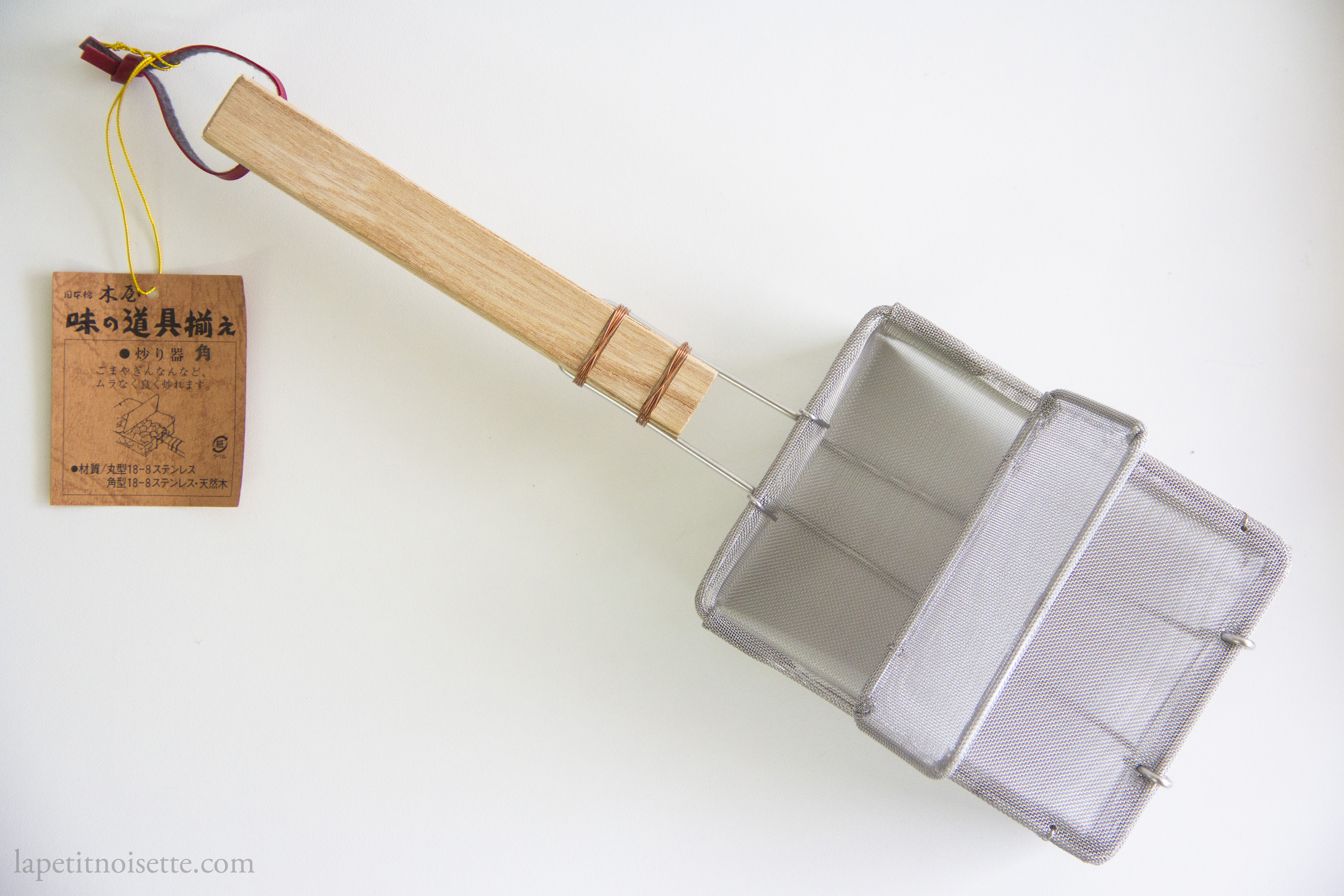
Sometimes when you eat an extremely tasty and unforgettable dish, it isn’t the exotic ingredients or complicated techniques that blow you away, but the depth of flavour that’s hard to describe. From my experience, this depth of flavour is typically achieved from the attention to detail of even the simplest preparations that make the biggest differences. Toasting sesame seeds is one of the simplest ways to bring out the enticing nutty aroma of sesame seeds which can then be used to elevate even the simplest dishes. It is one of those simple steps that epitomise the attention to detail that differentiates a simple dish to that of a high-end restaurant.
Learning to toast sesame seeds was one of the first skills I was tasked with learning when working in Japan. Whilst not directly related to the world of sushi, the toasted sesame seeds were an important addition sprinkled as a topping to certain starter dishes (otsumami/おつまみ) that we served at the beginning of the meal, or ground up using a mortar and pestle into a sauce.
Fondly looking back, it was also the first time that I got chewed out and scolded by my master in an extremely angry manner for over toasting the sesame seeds ever so slightly, which then proceeded to put him in a bad mode for the rest of the day and scold the rest of the staff. Even thinking back to it now I feel bad for everyone else at the restaurant, bearing in mind that I didn’t burn the sesame seeds, they were just ever so slightly more brown than he wanted, more on this later.
The technique for roasting sesame seeds here is another rather niche one as it doesn’t use a typical sesame seed roasting pan but a cage made from a metal mesh. If you have a frying pan or sesame seed roasting pan, you’d be better off finding a recipe for toasting sesame seeds somewhere else. This post isn’t so much a post on how to roast sesame seeds as an attempt to preserve the technique I was taught at the restaurant which I haven’t found anywhere else on the internet, even in Japanese.

For this technique, you’d need:
- Cooking sake in a spray bottle
- Sesame seeds (white ones recommended when you start out as they’re easier to judge)
- An open flame/stove. (This does not work with induction heat or a hot plate but it will work over hot charcoal but is slower.)
To begin, open the hatch of the sesame seed roaster and add around 2 to 3 tablespoons of sesame seeds into the metal cage. Switch on the stove on very low heat. Next, we want to judge how high to place the metal cage above the fire to start the roasting. Using your hand, place it high above the flame so that you don’t feel any heat from the flame before slowly lowering your hand to where it is just about unbearably hot (be careful not to burn yourself!). Just at this height is where you should be toasting your sesame seeds. Hold the metal mesh above the fire at this height and gently shake the sesame seeds in the cage left and right as you hold it at this height. The shaking should be quite quick but quite gentle, around 120 beats per minute on a musical metronome. The idea here is to move the sesame seeds around to evenly roast them but not so vigorously that they’re jumping around. Once heated for around 2 minutes, take the metal cage off the heat and spray with sake using the spray bottle from outside the cage. Once sprayed with sake, continue the shaking motion to spread the sake around evenly before returning to the heat. When back on the heat, continue shaking over the heat for a while before taking it off the heat for a while and continue shaking to distribute the heat. Repeat this motion of shaking the sesame seeds over the heat for about a minute before shaking them off the heat to redistribute the heat. This is a very important step for evenly toasting the sesame seeds. Once in a while spray the sake through the metal cage for a maximum of 3 or 4 times, you want to taste the sesame seeds and not overwhelm it with sake. Once in a while you should hear a little crackling sound from the sesame seeds which is alright, but too many crackling sounds means that you’re too close to the flame. The sesame seeds take around 10 to 12 minutes to toast which is quite labour intensive but a slow roast brings out the flavours much better.
After around 5 to 6 minutes, you can occasionally open the flap of the metal cage to check the doneness of the sesame seeds. They should have just started to take on a more intense yellowish hue. The goal here is to toast them until they are just before the perfect golden stage. Once just underdone, tip out the sesame seeds onto a paper towel and spread evenly into a single layer to cool. The sesame seeds at this point are extremely hot and will continue cooking to perfection, which is actually the mistake I made which got everyone scolded, as I toasted the sesame seeds to perfection in the metal cage, which meant that then I let them cool on the paper towel, they then over cooked. We always used our fingers to gently spread out the sesame seeds into a single layer and I always always burned my fingers ever so slightly but I just followed as that seemed to be what they did? But of course at home feel free to use a spoon so spread them out. Once cooled, store in an airtight container until needed. We always toasted the sesame seeds freshly everyday in the morning for the night service and never reused them the next day.
Shoutout to Sayaki-san who always would take the blunt of the scolding from Oyakata for me as it was much easier to scold him in Japanese as it was to scold me in broken English, especially during that one time I over toasted the sesame seeds. Once Oyakata would leave for lunch or take a phone call, Sayaki-san would always turn to me, smile and say that everything was alright even though I just got him into a ton of trouble.
Awesome! Thanks for sharing this marvelous technique!
Thank you! 🙂